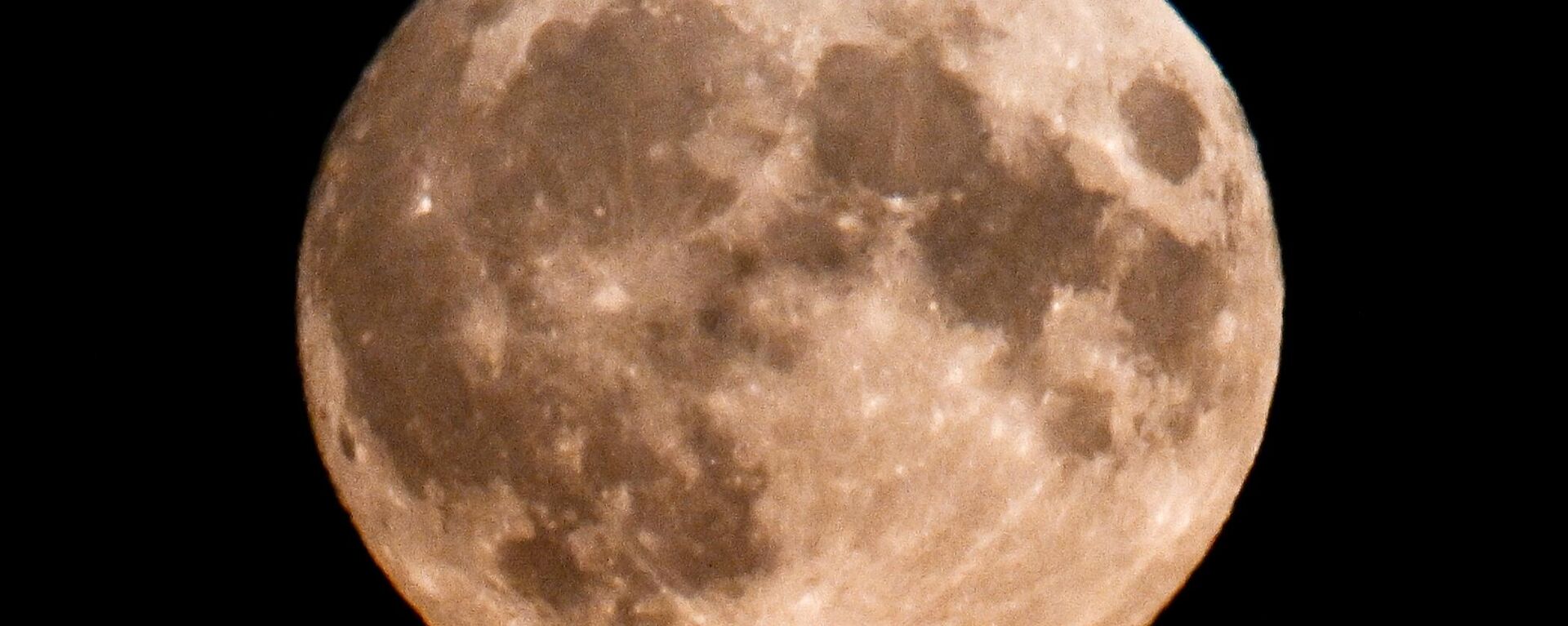https://sputnikglobe.com/20231020/nasa-testing-moon-suits-with-anti-dust-force-fields-1114366079.html
NASA Testing Moon Suits With Anti-Dust Force Fields
NASA Testing Moon Suits With Anti-Dust Force Fields
Sputnik International
Ahead of its planned return to the moon in 2025 with the Artemis program, the US space agency NASA is testing out a new type of fabric for space suits that could “repel lunar dust on demand.”
2023-10-20T18:31+0000
2023-10-20T18:31+0000
2023-10-20T18:32+0000
beyond politics
nasa
artemis program
lunar mission
dust
space dust
space flight
https://cdn1.img.sputnikglobe.com/img/102483/93/1024839359_0:1127:2536:2554_1920x0_80_0_0_d54e3bd068f9d56e74be8d67b96c072d.jpg
When American astronauts last visited the moon in the late 1960s and early 1970s, they found the ultra-fine lunar dust to be a constant problem. Made of silicates similar to that found in volcanic rock, lunar dust is abrasive, clinging to everything and caking on the bottoms of anything set on the ground, including astronauts’ boots and the treads of moon rovers. After the Apollo astronauts returned to their spacecraft, the fine dust irritated their eyes and lungs in ways similar to what miners experience.That’s why this time around, NASA is looking for solutions to the pesky problem, especially since astronauts might be on the moon for a lot longer than three days, the longest any Apollo astronaut stayed there.“The technology is designed to be stretchable, and when activated, it generates an electric field that repels lunar dust, preventing the dust from adhering to the LiqMEST fabric. This strategy can be applied both to spacesuits and fabric covers for lunar equipment during moon missions,” Arif Rahman, an HPU assistant engineering professor who led the grant proposal, explained in a news release.The Artemis program’s space suits have already been selected and revealed, which were designed by Axiom Space.NASA is testing out other dust mitigation measures as well, including an electrodynamic dust shield on the International Space Station.Americans are expected to return to the moon in 2025 on the Artemis III mission, marking the first time humans have walked on Earth’s only natural satellite since the Apollo 17 mission in 1972. The Space Launch System (SLS) rocket and the Orion spacecraft have been undergoing testing, including the uncrewed Artemis 1 mission in November 2022. Artemis II, a manned mission that will fly by the moon but not land on it, is scheduled for November 2024.Other nations also have plans to send manned missions to the moon, including Russia and China, and all three nations have iterated plans to establish permanent moon settlements in the coming decades.
https://sputnikglobe.com/20231013/sunlight-could-potentially-be-used-to-melt-moon-dust-into-roads-landing-pads---study-1114160398.html
Sputnik International
feedback@sputniknews.com
+74956456601
MIA „Rossiya Segodnya“
2023
News
en_EN
Sputnik International
feedback@sputniknews.com
+74956456601
MIA „Rossiya Segodnya“
Sputnik International
feedback@sputniknews.com
+74956456601
MIA „Rossiya Segodnya“
lunar dust; artemis mission; moon mission; nasa
lunar dust; artemis mission; moon mission; nasa
NASA Testing Moon Suits With Anti-Dust Force Fields
18:31 GMT 20.10.2023 (Updated: 18:32 GMT 20.10.2023) Ahead of its planned return to the moon in 2025 with the Artemis program, the US space agency NASA is testing out a new type of fabric for space suits that could “repel lunar dust on demand.”
When American astronauts last visited the moon in the late 1960s and early 1970s, they found the
ultra-fine lunar dust to be a constant problem. Made of silicates similar to that found in volcanic rock, lunar dust is abrasive, clinging to everything and caking on the bottoms of anything set on the ground, including astronauts’ boots and the treads of moon rovers. After the Apollo astronauts returned to their spacecraft, the fine dust irritated their eyes and lungs in ways similar to what miners experience.
That’s why this time around, NASA is looking for solutions to the pesky problem, especially since astronauts might be on the moon for a lot longer than three days, the longest any Apollo astronaut stayed there.
Called Liquid Metal Electrostatic Protective Textile (LiqMEST), the prototype fabric was developed at Hawaii Pacific University (HPU) in Honolulu with a $50,000 grant from NASA under the Lunar Surface Innovation Initiative (LSII), which kicked off in 2019. It will use electrostatic forces to push dust away from the fabric.
“The technology is designed to be stretchable, and when activated, it generates an electric field that repels lunar dust, preventing the dust from adhering to the LiqMEST fabric. This strategy can be applied both to spacesuits and fabric covers for lunar equipment during moon missions,” Arif Rahman, an HPU assistant engineering professor who led the grant proposal,
explained in a news release.
"When activated, it generates an electric field that repels lunar dust, preventing the dust from adhering," Rahman added. "This strategy can be applied both to spacesuits and fabric covers for lunar equipment during moon missions."

13 October 2023, 03:52 GMT
The Artemis program’s space suits have already been
selected and revealed, which were designed by Axiom Space.
NASA is testing out other dust mitigation measures as well, including an electrodynamic dust shield on the International Space Station.
Americans are expected to return to the moon in 2025 on the
Artemis III mission, marking the first time humans have walked on Earth’s only natural satellite since the Apollo 17 mission in 1972. The Space Launch System (SLS) rocket and the Orion spacecraft have been undergoing testing, including the
uncrewed Artemis 1 mission in November 2022. Artemis II, a manned mission that will fly by the moon but not land on it, is scheduled for November 2024.
Rather than launch with its lunar lander, the Artemis program will use a Starship Human Landing System (HLS) pre-positioned in lunar orbit, to which the astronauts will have to relocate from the Orion spacecraft for their visit to the lunar surface.
Other nations also have plans to
send manned missions to the moon, including Russia and China, and all three nations have iterated plans to establish permanent moon settlements in the coming decades.



